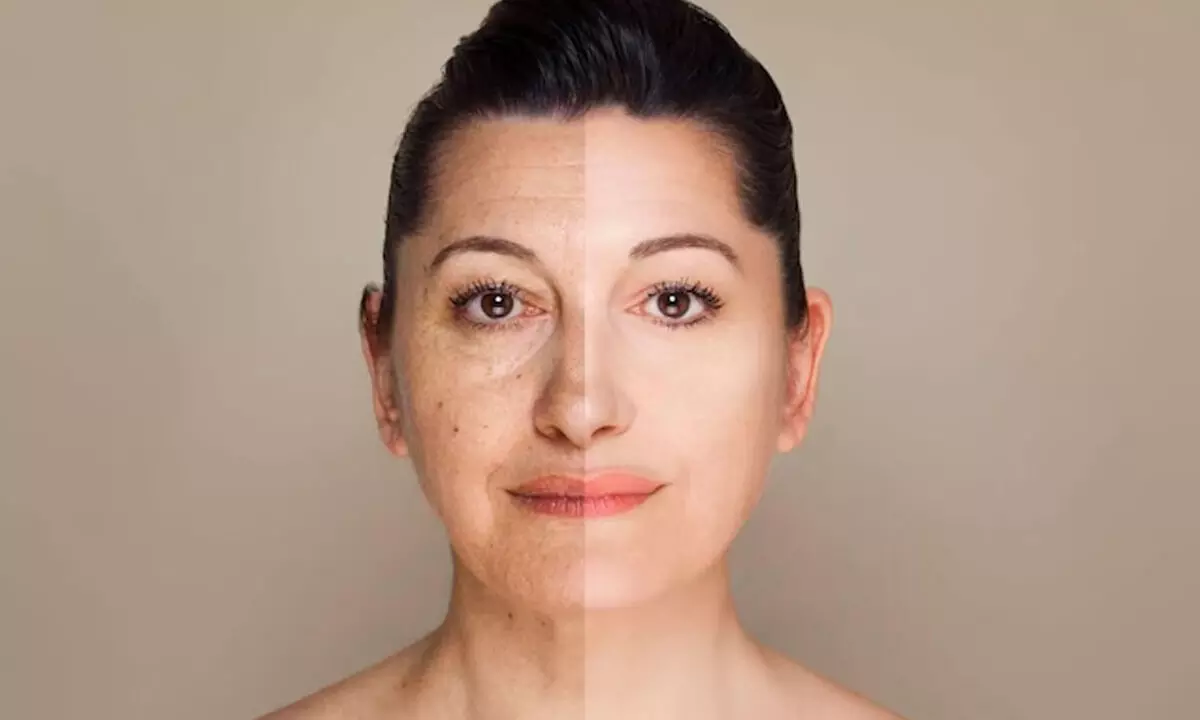Live
- Scholarships For Students
- EFLU hosts talk on 75 years of the Indian Constitution
- Mohan Babu: Half a Century of Cinematic Brilliance and Unwavering Legacy
- Chandrababu Vows Strict Measures for Women's Safety and Drug Control
- Deputy CM Bhatti Vikramarka Highlights Congress Government's Achievements
- PCC Expansive Meeting Held at Gandhi Bhavan in Hyderabad
- Formula 1: I didn't really want to come back after Brazilian GP, admits Hamilton
- IND vs AUS BGT 2024-25: Pat Cummins says the pressure of playing at home is there but team well prepared to beat India and win Border-Gavaskar Trophy
- Yastika Bhatia ruled out of remainder of WBBL 10 due to wrist fracture
- Telangana Assembly Sessions to be Held in the Second Week of December
Just In
How to Prepare for Rapid Aging at 44 and 60


Representational image
We’ve long believed that aging is a slow, steady process, marked by gradual changes like wrinkles, grey hair, and decreased muscle strength.
We’ve long believed that aging is a slow, steady process, marked by gradual changes like wrinkles, grey hair, and decreased muscle strength. However, new research suggests that we experience rapid aging during two key phases—around the ages of 44 and 60. This challenges the traditional view that aging happens gradually over time.
Sudden Bursts of Aging
A recent study monitored a group of people aged 25 to 75, examining their biological markers. The results showed that aging doesn’t happen evenly. Instead, there are two critical periods—one in the mid-40s and another in the early 60s—when significant changes occur in the body. During these times, we experience rapid shifts that impact both physical appearance and overall health.
Why Ages 44 and 60?
By the time people reach their mid-40s, lifestyle changes often contribute to accelerated aging. Many individuals are at the peak of their careers, and this period is often marked by increased stress, poor dietary habits, disrupted sleep patterns, and less physical activity. These factors contribute to visible signs of aging, such as the loss of muscle mass and skin elasticity.
At 60, the body’s ability to repair itself slows down even further, leading to more noticeable changes. This includes a decline in bone density, joint stiffness, and an increased risk of chronic conditions like cardiovascular disease. By this age, the cumulative effects of lifestyle choices over the decades can become evident.
Recognising the Signs
In your 40s, you may notice changes such as a slower metabolism, more wrinkles, and joint discomfort. By your 60s, these signs become more pronounced, often accompanied by cognitive changes, reduced mobility, and the onset of age-related illnesses. People with sedentary lifestyles might experience even more rapid physical decline, including loss of muscle mass and flexibility.
Can You Prepare for These Aging Phases?
While no one can stop the aging process, there are ways to slow its effects. The key is adopting a proactive approach before these critical phases begin. Regular exercise, especially strength training, can help preserve muscle mass, improve bone density, and maintain joint flexibility. A balanced diet rich in antioxidants and essential nutrients is also crucial for maintaining overall health.
Managing stress is equally important. High-stress levels over time can accelerate aging by impacting both mental and physical health. Techniques such as meditation, deep breathing exercises, and maintaining a healthy work-life balance can help reduce the toll stress takes on the body.
Health Strategies for Your 40s and 60s
In your 40s, it's important to maintain regular physical activity, focus on cardiovascular fitness, and incorporate strength training to counter the natural loss of muscle mass. Eating a nutrient-rich diet, cutting down on processed foods, and limiting alcohol consumption are essential for preventing premature aging. Staying active mentally and socially can also help keep the mind sharp.
By your 60s, you should prioritise preventive healthcare. Regular screenings for conditions like diabetes, heart disease, and bone density loss are important for detecting issues early. Continuing with physical activity—especially exercises that promote balance and flexibility—will help prevent falls and mobility issues. Managing stress through relaxation techniques is also crucial at this stage, as chronic stress can further accelerate aging.
The Importance of Sleep and Diet
Sleep plays a vital role in the aging process. Poor sleep can weaken the immune system and increase the risk of illness. It’s important to maintain good sleep hygiene, such as sticking to a regular sleep schedule and creating a restful sleep environment.
Your diet can also significantly impact how well you age. A balanced diet that includes plenty of fresh fruits, vegetables, lean proteins, and whole grains can help maintain blood sugar levels, reduce inflammation, and improve metabolic health. Avoiding processed foods and sugary snacks is key to preventing chronic diseases that often become more prevalent with age.
While we cannot avoid aging, we can prepare for its rapid phases at 44 and 60 by adopting healthy habits early on. Regular exercise, a nutritious diet, and stress management are essential tools to minimise the effects of aging. Taking care of your body and mind before these key phases will help you navigate the physical and mental changes that come with growing older.

© 2024 Hyderabad Media House Limited/The Hans India. All rights reserved. Powered by hocalwire.com






